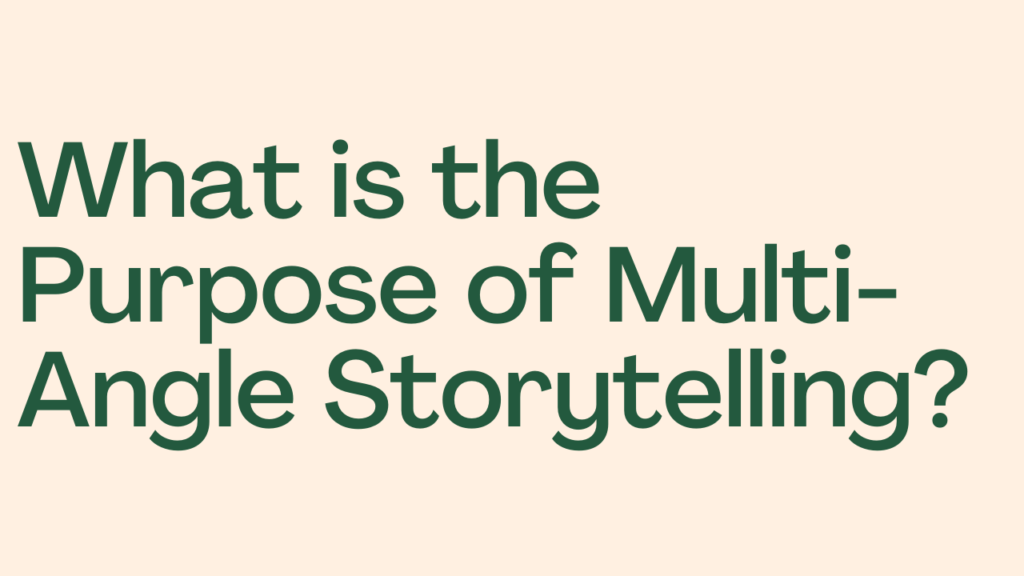Human connection has always revolved around stories, and in the digital age, these stories take on more complex and interactive forms. An interesting and adaptable strategy, “Your Topics | Multiple Stories” examines a single topic from different perspectives to give a fuller picture. This approach takes into account the needs of a wide range of audiences by combining various content formats such as blogs, videos, and podcasts to provide a comprehensive experience.
This article will delve into the idea of multi-story content, why it’s important, and how to write captivating stories that attract readers and boost SEO.
What is the Purpose of Multi-Angle Storytelling?

Through the presentation of multiple narratives and points of view, the multi-story approach aims to give viewers a more comprehensive and nuanced grasp of a central theme. This strategy is in line with audience preferences and promotes higher engagement whether it’s through video, infographics, or written content.
Think about sustainable living as an example. Stories about sustainable products, interviews with industry leaders, individual paths to sustainability, and cutting-edge tech solutions can all stand alone in multi-story content rather than a single post.
Some of the main advantages are:
People learn best in a variety of contexts and with varying approaches.
Humanizing material with stories and insights derived from data increases retention and connection.
Promotes compassion and analytical reasoning.
Optimizes search engine optimization by focusing on a large variety of keywords and associated queries.
Now that we’ve established the importance of these components, let’s examine how this approach unfolds.
Crafting Engaging Multi-Angle Narratives
1. Storytelling from Multiple Perspectives
The success of multi-angle storytelling depends on reaching out to various demographics with compelling stories. Content becomes more engaging and accessible when different perspectives are shared.
a. Central Character-Driven Stories
The emotional resonance of content is increased when it is humanized by centering on individual stories. Realness and interest are piqued by personal journeys.
An inspiring example would be to share the story of someone who made the switch to zero-waste living and how it changed their life.
b. Expert Insights and Data-Driven Narratives
Incorporating statistical evidence and expert opinions strengthens the story’s credibility and authority. The audience will trust you more after you take this approach.
The following is an example of an interview format: it features environmental scientists talking about ways to reduce one’s carbon footprint.
c. Multiple Stakeholder Narratives
To demonstrate a comprehensive examination of the subject, it is helpful to highlight viewpoints from different groups of people involved, including consumers, companies, and lawmakers.
d. Conflict-Resolution Stories
Tales that follow a protagonist as they work to solve a problem have inherent conflict and eventual resolution, which makes the story interesting and instructive.
2. Multi-Format Content Strategy
To increase the chances of engagement and retention, various formats are created to cater to different audience preferences.
a. Blogs and Articles
Readers benefit from in-depth written content because it permits in-depth examination of subtopics.
b. Video and Podcast Storytelling
Audiences that like more interactive and interesting content can be reached through visual and auditory formats. Podcasts provide an intimate, conversational approach, while videos can show processes.
c. Infographics and Visual Summaries
For people who learn best visually, infographics break down large amounts of data into manageable chunks and offer immediate, actionable insights.
d. Interactive Elements
Interactive timelines, polls, and quizzes encourage participation, making stories more immersive and memorable.
3. Central Theme Exploration with Interconnected Stories
Each subtopic should contribute to the overall theme, and creating interconnected narratives makes sure of that.
a. Thematic Subtopics and Content Pillars
If you want to keep things consistent and avoid repeating yourself, break the main topic into thematic pillars. The main point should be emphasized in every story.
b. Sequential Storytelling for Depth
Blog posts or videos that are part of a larger series create anticipation and encourage viewers to come back for more.
c. Cross-Linking for Contextual Connections
By providing context and continuity, internal linking between related stories enhances the reader’s experience and aids in navigation.
d. Relevance Across Platforms
If you want your message and audience reach to be reinforced across many platforms, like social media and blogs, make sure the theme stays consistent.
4. Engaging Audience with Empathy-Centered Stories
Audiences are deeply moved and form stronger emotional bonds through storytelling that centers on empathy.
a. Audience-Centric Content
If you know your audience’s struggles and aspirations, you can craft stories that speak to their beliefs and overcome their obstacles.
b. Highlighting Triumph and Struggles
Stories that highlight both successes and setbacks add authenticity and relatability to the narrative.
c. Celebrating Community and Collaboration
Stories that highlight the power of unity or the positive influence on a community can bring people together and give them a sense of purpose.
5. Multi-Narrative Content Planning and Execution
Maintaining coherence in planned multi-narrative content demands strategic organization.
a. Detailed Content Calendar
The release of stories can be better coordinated and consistency maintained with the use of a well-organized content calendar.
b. Avoiding Redundancy
Repetition is bad, so make sure each story delves into a different angle or subtopic.
c. Keyword Optimization Across Narratives
You can improve your search engine rankings without resorting to keyword stuffing by carefully inserting relevant keywords into various subtopics.
d. Monitoring Performance Metrics
Future content can benefit from a more refined storytelling approach after analyzing engagement metrics.
Perspectives for Richer Content
Stories that use multiple points of view are more interesting and engaging because of the depth they provide. A story that addresses a wide range of human experiences is more likely to resonate with its audience. Things like:
A cultural perspective is an examination of a topic from the vantage point of various regions or cultures.
Integrating knowledge from several disciplines, such as art, history, and technology, to form interdisciplinary insights.
To combine relatability with competence, it is helpful to highlight both personal anecdotes and professional insights.
More people will be able to enjoy the content because it is more inclusive and thorough.
FAQs
What is a multi-angle storytelling approach?
A method of presenting various narratives around a central theme for a richer, more holistic view.
Why is multi-format storytelling important?
It caters to different audience preferences and improves engagement.
How can interconnected stories enhance content?
They provide context, maintain coherence, and encourage further exploration.
What are thematic content pillars?
Subtopics that support the main theme, creating a structured and consistent narrative.
How does storytelling improve content retention?
Emotional engagement makes information memorable and relatable.
Read More: Leigh-Anne Csuhany: All You Need to Know About Kelsey Grammer’s ex-wife
Conclusion
If you want to increase engagement, retention, and reach with your content, try using the “Your Topics | Multiple Stories” method. Content gains vitality, relatability, and impact through the presentation of varied viewpoints and formats. By using this approach, you can build trust, inspire more in-depth investigation, and widen the audience’s viewpoint. A well-planned use of multiple perspectives in storytelling has the potential to make your material more engaging and impactful for the target audience.

Karen Altizer is a seasoned professional with a wealth of expertise in marketing and communications, adept at crafting compelling narratives and strategic messages tailored to various stakeholders.

